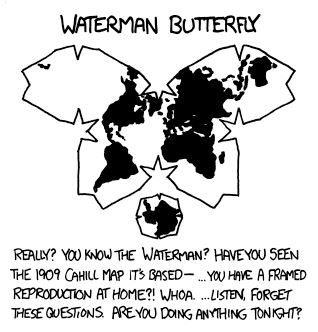Located in London, I measured the RTT or round trip time to 574,691 random webservers and plotted the times on the globe.

Discovery was done with masscan, measurements using hping and plotting with an old Python script I’ve revived and enhanced.
This is part of the next writeup on my blog, with which I will be posting any of the code I’ve used.


Is there an ELI5 for fiber optic questions? Am interested in how they’re made, properties of different types, and how signals are sent/repeated etc.
Im too dumb to do real ELI5, but basically fibers are never perfect and light will never travel perfectly straight through it and instead bounce around unpredictably inside the material. So the the actual distance that the light has to travel to get to the target is much larger than the length of the fiber.
To get the latency down you want to the light to travel uninhibited. To achieve this people have come up with “hollow core” fibers which are basically just very long, very thin, very precise tubes with a vacuum inside that light travels through. The following pic shows what these look like.
Light will still not travel perfectly straight in these but it will only be able to bounce off the walls and not off any imperfections in the fiber material (because there is none). Here the travel time is decided by how straight you can inject your light beam into the hole. The last pic with the glass pane shows what would happens if its not very straight…
Thank you very much for that in-depth explanation!
If you have any more of that, I’d be very interested :-)
This is just what i picked up from my colleagues at work while i was helping them with electronics trouble in their lab. They are doing research using attosecond length laser pulses, which is why they needed to use hollow core stuff to keep the signal fast and clean. If you dont remember what atto means those pulses are 0.000000000000000001 seconds long (well in that range not actually 1 attosec more like tens to hundreds of attosecs). But yeah thats all i know ^^
For more technical details from Wikipedia:
Makes sense. It’s actually quite cool. Our internet signals. Encoded in (I’m guessing) light waves instead of radio waves, with similar multiplexing/ways of maximising signal bandwidth?
I’m staggered by how small these are and how flexible they are.
deleted by creator